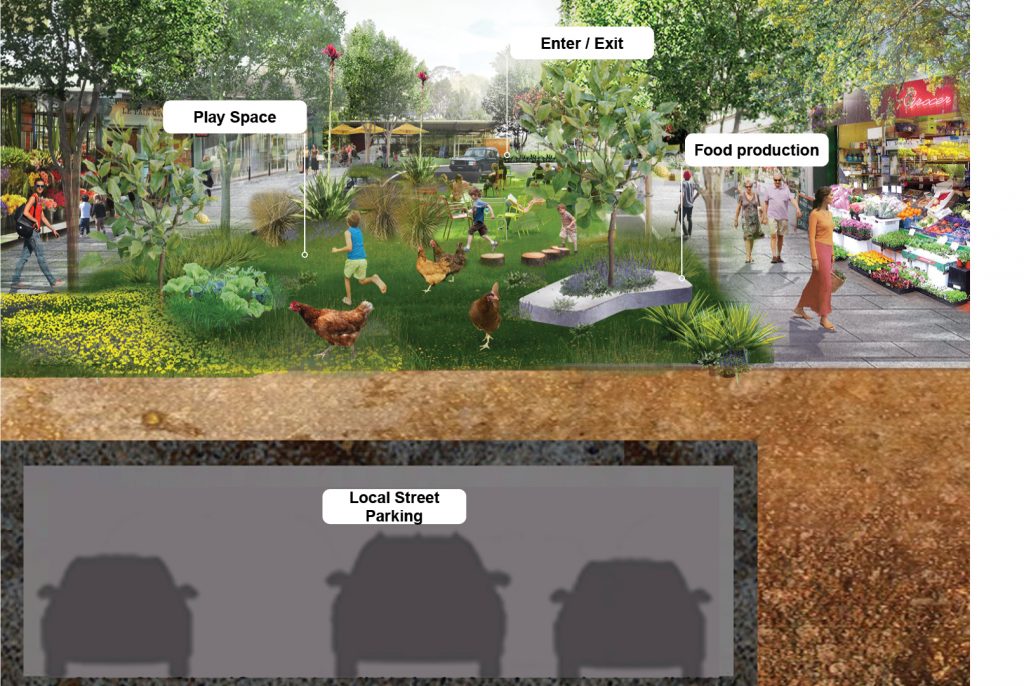Chicken Street
Simon Trick
Streets are currently all about cars and parking. Food production and play are far more appealing
Streets and road networks are one of our most interconnected and continual public open spaces systems. Currently, this network is mostly focused around creating the most direct and efficient routes for vehicles and transportation with our society relying on many of these key transportation channels for delivery of food and supplies.
There are, however, many quiet local and residential streets that are only providing car parking spaces for the local community. ‘Chicken Street’ re-imagines these asphalt surfaces to be pushed directly down into the ground and a lid placed over the top. These underground carparks can be accessed via ramps at either end of the street and still provide the amenity and convenience of parking spaces for people living nearby. At the ground level, a large expanse of potential public open space has been gained, allowing occupants of the adjacent residential dwellings to grow vegetables, play, socialise and raise chickens. These interconnected networks of public open space also create corridors for native fauna to easily navigate around urban areas whilst having minimal impact upon the personal convenience of the use of vehicles to get around. Adjacent properties can prosper from having an outlook onto green open space with the impacts of residing next to a road and associated noises diminished.
‘Chicken Street’ doesn’t propose to re-invent the wheel nor reject the networks we currently have in place, it simply looks at it from a birds-eye view.
